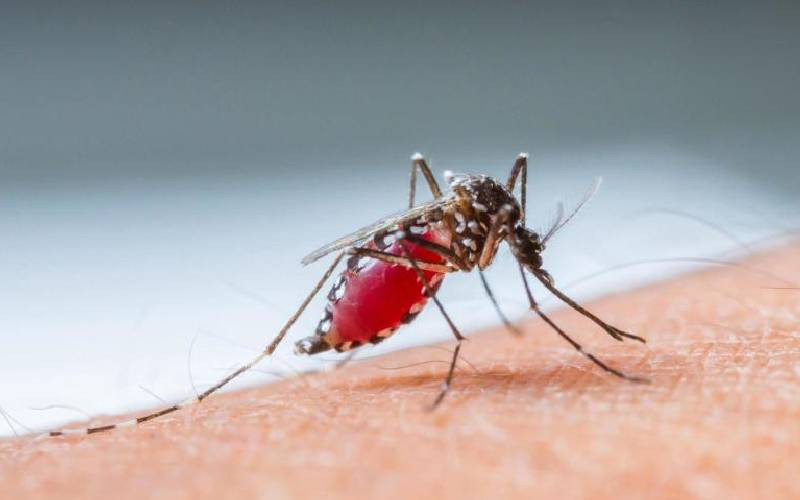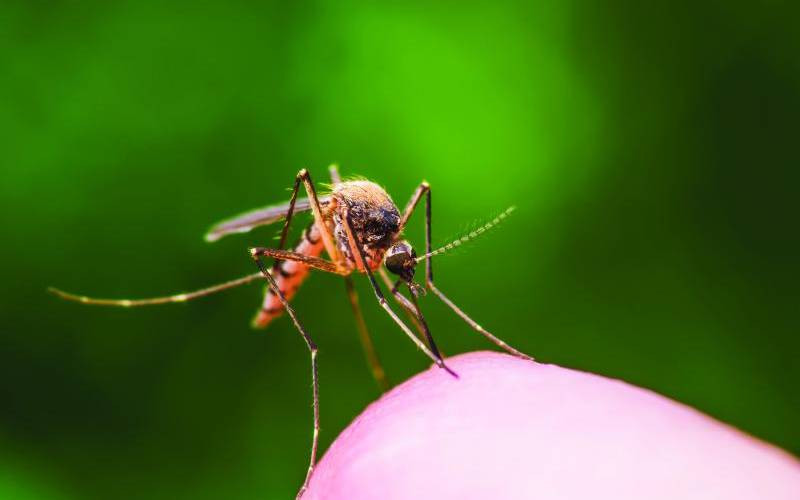NAIROBI: When it comes to diseases spread by mosquitoes, Dengue Fever does not immediately come to mind.
This is despite the fact that medics identify it as an ailment that poses a serious threat to human lives along East Africa’s coast.
Dengue fever is a viral disease spread by two mosquito species common around the lake regions and at the coastal line. While it manifests in four types, one to four, type two is more common in our environment.
The World Health Organisation estimates that 40 per cent of the world’s population live in areas prone to this infection and up to 100 million people get infected annually. Out of these, about 500,000 are asymptomatic or show significant symptoms of the disease while about 22,000 die from the illness each year.
“In Kenya, we have continued diagnosing this disease in the North. In 2013, we had an outbreak in Mombasa which had the last reported incidence in the 1980s”, says Dr Evans Amukoye - Kenya Medical Research Institute Director, Centre for Respiratory Disease and Research.
The symptoms of dengue fever include a high body temperature of up to 40°C, headache, nausea, vomiting, rash and pain in the eyes, joints, and muscles. In severe cases, symptoms may include intense stomach pain, repeated vomiting bleeding from the nose or gums or the patient’s blood pressure may go very low such that the blood is unable to circulate.
After a person is bitten by an infected mosquito, it takes between one and two weeks for symptoms to develop.
A patient who recovers from this disease will get lifetime immunity from the serotype that infected them but can be re-infected by a second serotype with an increased risk of exhibiting more severe symptoms.
There is neither vaccine nor definitive treatment for this disease but early diagnosis can alert medical personnel to look out for danger signs and institute supportive treatment that can reduce deaths.
Advancements in diagnosis of this disease has made it possible for rapid testing to be undertaken even in the rural areas.
“We are happy to note that this has been introduced into our market. Apart from helping us save lives, it enables us establish whether or not the disease is endemic as opposed to waiting for an epidemic to hit,” Dr Amukoye says noting that ongoing surveillance has shown there is large populations previously treated for malaria that also have the viral infection.
To prevent transmission of this disease, people living in the target areas are encouraged to sleep under mosquito nets and during the day wear clothes that cover their entire body or use mosquito repellents. Further, medics recommend regular screening of the disease at least three times a year.
Scientists are currently developing a vaccine against dengue fever that will soon be put on trial. It is believed that once approval from WHO is granted, it will be recommended for use throughout the world which should lead to significant reduction in number of cases.
At the moment, a pharmaceutical company - Sanofi has developed a vaccine dubbed Dengvaxia and towards the end of 2015 approved it for use in three countries: Mexico, Philippines and Brazil.
Its overall success is, however, still in question since during the clinical trials Dengvaxia was found to reduce chances of contracting the disease by only 60 per cent.
Stay informed. Subscribe to our newsletter
It is also not approved for use by small children and the elderly having been found to work among the nine to 45 age groups. It was found to be least effective in children under six who, due to their vulnerable immune systems, may need it the most.
 The Standard Group Plc is a
multi-media organization with investments in media platforms spanning newspaper
print operations, television, radio broadcasting, digital and online services. The
Standard Group is recognized as a leading multi-media house in Kenya with a key
influence in matters of national and international interest.
The Standard Group Plc is a
multi-media organization with investments in media platforms spanning newspaper
print operations, television, radio broadcasting, digital and online services. The
Standard Group is recognized as a leading multi-media house in Kenya with a key
influence in matters of national and international interest.
 The Standard Group Plc is a
multi-media organization with investments in media platforms spanning newspaper
print operations, television, radio broadcasting, digital and online services. The
Standard Group is recognized as a leading multi-media house in Kenya with a key
influence in matters of national and international interest.
The Standard Group Plc is a
multi-media organization with investments in media platforms spanning newspaper
print operations, television, radio broadcasting, digital and online services. The
Standard Group is recognized as a leading multi-media house in Kenya with a key
influence in matters of national and international interest.








